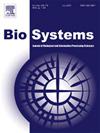nath - luxury原理:通过ATP合成/水解的分子组装和非遍历性的统一热力学框架。
IF 1.9
4区 生物学
Q2 BIOLOGY
引用次数: 0
摘要
Nath原理认为,特定约束下自由能耗散()的最大化有利于复杂有机分子在特定约束下的功能和组装,挑战了耗散增加导致无序的经典观点。为了将这一原理建立在热力学的基础上,本研究建立了纳特原理与一个适用于生物系统之外的原理之间的联系:繁茂原理。后者描述了多尺度系统如何在响应外力时耗散能量。这两个原理在概念上是等价的,支持Nath的ATP合成/水解统一理论,以及细胞能量耗散、守恒和储存的非平衡机制的存在。热力学分形维数()是《奢华原理》中量化多尺度耗散的一个参数,它与热力学分形维数()之间的负相关关系强化了这种联系。此外,还建立了控制稳态和自由能的方程之间的关系。考虑到多尺度描述是基于外力施加的约束,这限制了可能的分子构型,Nath原理所描述的生物系统的非遍历性质得到了验证。我们进行了对比分析,将这些nath - luxiæ原理与Prigogine的工作(描述遍历系统)在应用于生物系统的热力学演化和地球上存在的生命形成限制方面进行了对比。这表明nath - luxiae原理可以显著提高生命所需的复杂分子组装的可能性。本文章由计算机程序翻译,如有差异,请以英文原文为准。
The Nath-Luxuriæ principles: Unified thermodynamic framework for molecular assembly and non-ergodicity via ATP synthesis/hydrolysis example
Nath's principle posits that the maximization of free energy dissipation () under specific constraints facilitates the function and assembly of complex organic molecules under specific constraints, challenging the classical view that increased dissipation leads to disorder. To ground this principle in thermodynamics, this study establishes a connection between Nath's principle and a principle applicable beyond biological systems: the Principium Luxuriæ. The latter describes how multiscale systems dissipate energy in response to external forces. The conceptual equivalence of both principles is demonstrated, supporting Nath's unified theory of ATP synthesis/hydrolysis and the existence of non-equilibrium mechanisms for cellular energy dissipation, conservation, and storage. This connection is reinforced by a mathematical relationship demonstrating a negative correlation between and the thermodynamic fractal dimension (), a parameter quantifying multiscale dissipation in the Principium Luxuriæ. Furthermore, a relationship is established between the equations governing homeostasis and free energy. Given that the multiscale description is predicated on constraints imposed by external forces, which limit possible molecular configurations, the non-ergodic nature of biological systems described by Nath's principle is validated. A comparative analysis is conducted, contrasting these Nath-Luxuriæ principles with Prigogine's work (which describes ergodic systems) in their application to the thermodynamic evolution of biological systems and the constraints present on Earth for the formation of life. It is suggested that the Nath-Luxuriæ principles may significantly enhance the probability of assembling complex molecules necessary for life.
求助全文
通过发布文献求助,成功后即可免费获取论文全文。
去求助
来源期刊

Biosystems
生物-生物学
CiteScore
3.70
自引率
18.80%
发文量
129
审稿时长
34 days
期刊介绍:
BioSystems encourages experimental, computational, and theoretical articles that link biology, evolutionary thinking, and the information processing sciences. The link areas form a circle that encompasses the fundamental nature of biological information processing, computational modeling of complex biological systems, evolutionary models of computation, the application of biological principles to the design of novel computing systems, and the use of biomolecular materials to synthesize artificial systems that capture essential principles of natural biological information processing.
 求助内容:
求助内容: 应助结果提醒方式:
应助结果提醒方式:


